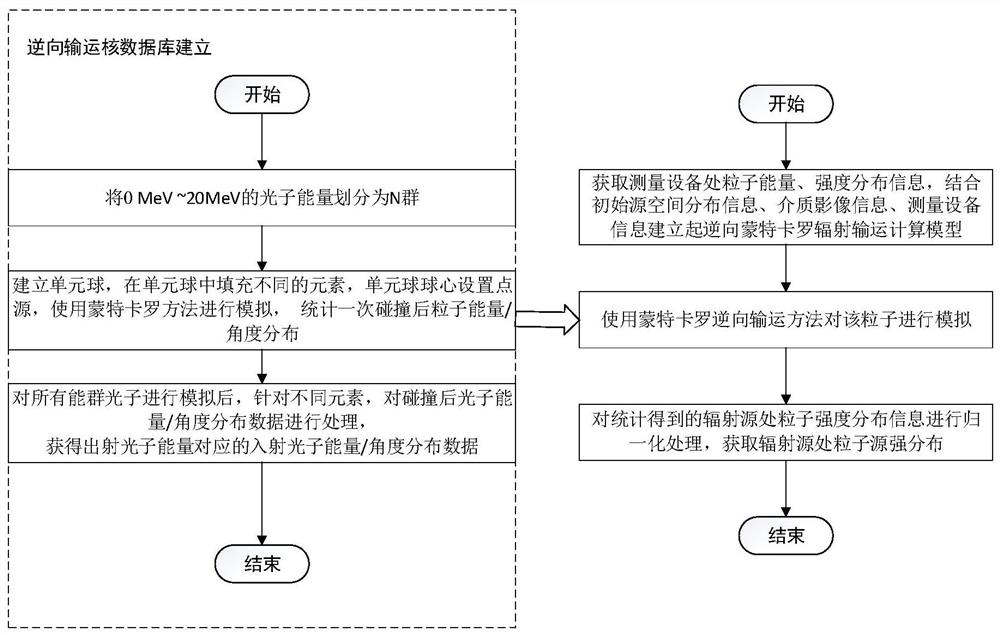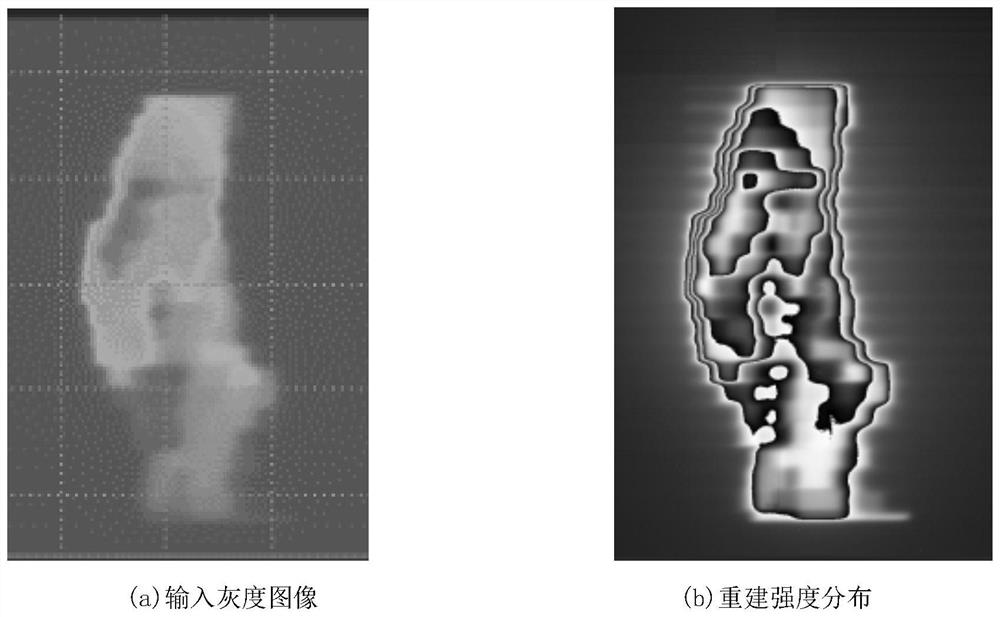Radiation source intensity reconstruction method based on reverse particle transport
A particle transport and radiation source technology, applied in the field of radiation source intensity reconstruction based on reverse particle transport, can solve the problem of difficulty in accurate reconstruction of radiation sources, achieve high-precision radiation source intensity distribution reconstruction, and achieve radiation source intensity distribution reconstruction. Effect
- Summary
- Abstract
- Description
- Claims
- Application Information
AI Technical Summary
Benefits of technology
Problems solved by technology
Method used
Image
Examples
Embodiment
[0046] Intensive reconstruction of a radiotherapy radiation source in a typical lung cancer patient. The lung cancer patient received intensity-modulated radiation therapy, and a total of 7 beams were irradiated. Here, beam 1 was reconstructed with radiation source intensity. Beam 1 was vertically incident on the surface of the human body. The distance to the portal imaging device is 140cm, and the portal imaging device collects measurement images such as figure 2 (a). The specific reconstruction steps are as follows:
[0047] 1. Establishment of photon reverse transport nuclear database
[0048](1.1) Divide the photon energy of 0MeV~20MeV into 200 groups, and the energy interval of each group is 0.1MeV; (1.2) Establish a unit sphere, fill the unit sphere with different elements (main elements related to the human body), and the center of the unit sphere Set a point source, take each energy group in step (1.1) as the source energy distribution, use the Monte Carlo method t...
PUM
 Login to View More
Login to View More Abstract
Description
Claims
Application Information
 Login to View More
Login to View More - R&D
- Intellectual Property
- Life Sciences
- Materials
- Tech Scout
- Unparalleled Data Quality
- Higher Quality Content
- 60% Fewer Hallucinations
Browse by: Latest US Patents, China's latest patents, Technical Efficacy Thesaurus, Application Domain, Technology Topic, Popular Technical Reports.
© 2025 PatSnap. All rights reserved.Legal|Privacy policy|Modern Slavery Act Transparency Statement|Sitemap|About US| Contact US: help@patsnap.com



